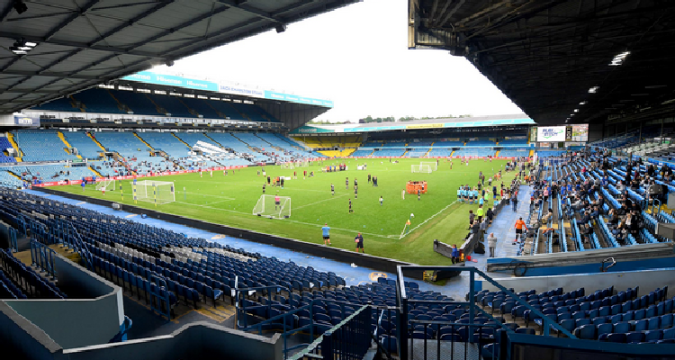
Maintaining a football stadium is no small task, especially when the goal is to create a top-quality environment that ensures player safety, enhances fan enjoyment, and upholds the club’s reputation. From turf upkeep to seating maintenance, a comprehensive approach is essential. Each component of the stadium, whether it’s the pitch, seating, or support facilities, requires careful planning, routine care, and specialized expertise. Here’s a guide on how to approach comprehensive maintenance for a football stadium.
1. Field and Turf Maintenance
The pitch is arguably the most critical element of a football stadium, and maintaining it in perfect condition is crucial for both player performance and safety. A high-quality pitch requires frequent mowing, watering, aeration, fertilization, and pest management. Groundskeepers typically follow a strict routine to ensure the grass remains healthy and can withstand the rigors of continuous play.
Regular aeration helps prevent soil compaction and promotes root growth by allowing air, water, and nutrients to reach the soil. In addition to traditional practices, modern stadiums use advanced irrigation systems with moisture sensors to monitor soil hydration and automatically adjust water levels. This not only conserves water but also prevents over-watering, which can damage grass roots. Synthetic turf, while lower maintenance, also needs attention; it requires regular brushing to keep fibers upright and safe for players, as well as periodic leveling to maintain a consistent surface.
2. Seating Area Upkeep and Repairs
Stadium seating endures high levels of wear from fans, so keeping these areas in good shape is essential. Regular inspections should be scheduled to check for loose bolts, cracked seats, and other issues that may compromise safety or comfort. Addressing minor repairs quickly prevents them from developing into major issues.
In addition to functional repairs, seats benefit from regular cleaning and protective treatments. For instance, applying UV-resistant coatings helps prevent fading from sunlight exposure, and specific cleaning solutions help remove stains without damaging the material. Premium seating areas often feature upholstery or cushioned seats, which need extra care. Regular vacuuming, stain treatment, and upholstery repairs can extend their life and ensure they stay comfortable for fans.
3. Facility Cleanliness and Waste Management
Maintaining a clean and hygienic environment is essential for both aesthetics and public health. Cleaning routines should cover all areas, including seating sections, concourses, restrooms, and concession stands. Waste management is a significant part of stadium maintenance, especially given the volume of trash produced during events.
Establishing a structured waste management plan, with plenty of well-marked bins for recyclables and compostable items, encourages fans to dispose of waste responsibly. After events, deep cleaning is necessary to ensure the stadium remains in prime condition. Power-washing floors, sanitizing restrooms, and disinfecting high-contact areas are essential to keep the space inviting. Sustainable practices, such as composting and recycling, can also reduce waste and promote the stadium’s environmental efforts.
4. Lighting and Audio-Visual Equipment Maintenance
Lighting and sound systems play a major role in creating a vibrant matchday atmosphere, especially for evening games. The stadium’s lighting systems need regular checks and maintenance to ensure they operate reliably and efficiently. This includes replacing bulbs, inspecting wiring, and maintaining backup systems to prevent disruptions during events.
Switching to energy-efficient LED lighting has become popular in stadiums for its longevity and reduced power usage. Similarly, audio-visual systems like PA systems, scoreboards, and video screens require regular calibration to ensure clarity and functionality. These systems, if not maintained, can result in technical issues that negatively impact the fan experience.
5. Structural Integrity and Safety Checks
Safety is paramount in a stadium that holds thousands of fans, and maintaining the structural integrity of the building is crucial. Routine inspections of concrete, railings, stairs, and other load-bearing elements help identify any potential safety concerns, such as cracks or signs of corrosion. Professional engineers should assess the stadium structure regularly, especially after major events or extreme weather, to prevent long-term wear from compromising the stadium’s stability.
Any necessary repairs should be handled promptly, and preventative measures, such as applying rust-resistant coatings or waterproof sealants, can extend the life of key structural components. Regular safety checks build trust with fans and demonstrate the club’s commitment to their welfare.
6. Security Systems and Emergency Preparedness
A secure environment is critical for fans to feel comfortable and safe. Security measures include surveillance cameras, alarm systems, and a robust crowd management strategy. Routine maintenance of these systems ensures they’re functional and able to handle potential incidents. Emergency equipment, such as fire extinguishers, exit signage, and first-aid stations, should also be checked regularly and replaced as needed.
Training staff in emergency response protocols is equally important. Regular drills help employees prepare for a range of scenarios, such as evacuations, medical emergencies, or power outages. A well-prepared staff contributes significantly to both fan safety and smooth operations.
7. Sustainability and Environmental Initiatives
Stadiums have a substantial environmental impact, and implementing sustainable practices can improve their ecological footprint. Green initiatives, such as installing solar panels, using rainwater collection for irrigation, and reducing single-use plastics, are effective ways to make stadiums more sustainable. Many stadiums have also begun using eco-friendly cleaning supplies and adopting recycling and composting programs to reduce waste.
Incorporating energy-efficient HVAC systems, lighting, and water-saving fixtures reduces operational costs and aligns with the global shift toward sustainability. These initiatives also resonate well with fans, as many supporters appreciate clubs that prioritize environmental responsibility.
From the turf to the stands, every aspect of a football stadium plays a role in delivering an exceptional experience to players and fans alike. Maintaining a stadium in top condition requires a comprehensive approach, covering everything from field maintenance and seating to lighting, structural safety, and sustainability. By following these guidelines, clubs can ensure their stadium remains a safe, enjoyable, and memorable venue season after season. Proactive maintenance not only extends the life of the facility but also upholds the club’s commitment to excellence, making it a true home for fans and players.